Drainage solutions for Santa Barbara soil types
Water is a vital component to the health and vitality of our landscapes. Yet, it is certainly possible to have too much of a good thing. When yards don’t drain properly, plants become waterlogged and mold can grow.
Just by looking at our property we can see how the topography affects water flow. However, most of us are unaware of the soil type, yet knowing this is a vital clue to understanding how much rainwater is absorbed and how much becomes “stormwater runoff,” or surface drainage. For any gardener wishing to select the right plants for the property’s conditions, a soil test is a great idea. For the property owner struggling with landscape drainage issues—beds that are too dry or lawn drainage that is too slow, for instance—knowing the makeup of the soils is a must.
Monterey Shale
Found mostly in the foothills of Santa Barbara County, this soil is comprised largely of what the name would suggest: shale. The texture is chalky and compacted. As it is concurrent with slopes and hillsides, water drains logically with the topography. The lack of nutrients here thus make planting difficult while low areas at the base of slopes can be wet.
Dealing with outdoor drainage in Monterey Shale: For planting lush gardens, Monterey Shale is best replaced with a more friendly soil type. But, for the naturalist willing to celebrate the natural landscape, drainage features can be created with gravel and stone that is not only effective in capturing and conveying excess water drainage, but can be a breathtaking addition to a property.
Anyone who has ever made pottery or an ashtray understands the properties of clay and why it can be detrimental to landscape drainage. Dense with very fine particles, clay is either gummy and heavy when wet or it’s hard and impervious when dry. Either way, water does not percolate through and thus water on clay soils either runs off or sits for a very long time.
Dealing with outdoor drainage in clay soils: Fortunately, clay soils can be amended with mineral additives to improve water infiltration as well as organic matter for plant health.
Sand
Found largely in the coastal areas of the Southern California region, sandy soils are coarse in texture and prone to erosion, lacking the “glue” of organic material to hold its particles together. Sandy soil is easy to identify as it is gritty, with visible grains of sand. The only real drainage issue is that water drains too quickly, making water supply a concern for plants.
Dealing with outdoor drainage in sandy soils: Know your soils. Are they sandy with a hardpan layer below that might hold water after it quickly it percolates through to the bottom? Is it actually a fine sand that holds water? Select plants that are appropriate for these conditions, consulting with a landscape professional if unsure. Plants that are happiest in coastal environments and those that love acidic soils are great choices for sandy soils.
Sandy Loam
The darling of Santa Barbara soil types, sandy loam is a well-balanced composition of sand, clay, and silt that is ideal for healthy plant growth. Not needing much in the way of amendments, homeowners with this soil type can feel very fortunate, provided that the topography is likewise amenable to positive outdoor drainage. If the land is too flat, water may still sit for too long. Proper grading, gravel drainage beds, and soil amendments all can contribute to the creation of a healthy and successful outdoor oasis.
Dealing with outdoor drainage in sandy loam: It is actually hard to improve on sandy loam, but a soil test will reveal whether planting beds could benefit from the addition of organic matter to adjust the pH for optimal plant growth. For drainage concerns, this is where working with the topography of the land is most important. Look for low areas that often retain water and consider whether an area drain would improve the success of plants or turf there.
For the homeowner unsure of how to conduct a soil test, a local landscape contractor can assist in collecting samples and sending away for the results. Or, he or she may even have a “best guess” if they have done work on nearby properties. Further, for any drainage problem, talk with a landscape professional to determine which solution is best for your property’s topography and soil type.

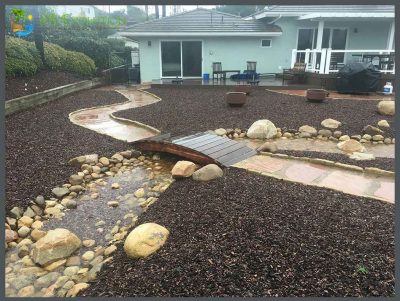
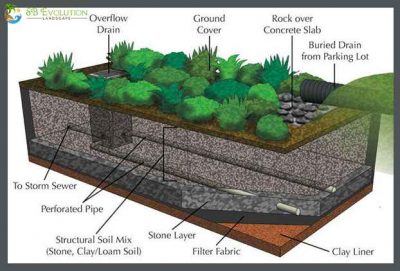


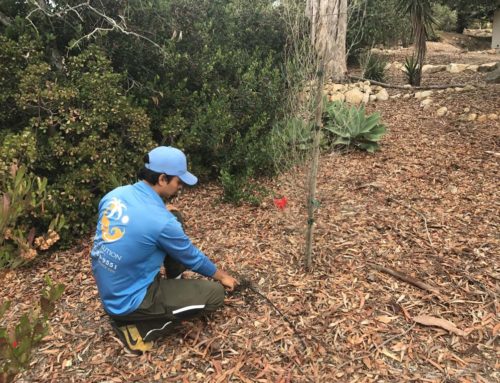
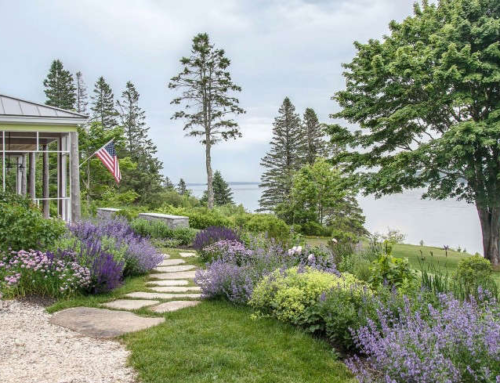
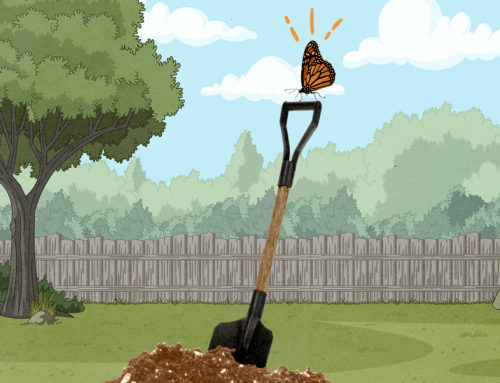

Leave A Comment
You must be logged in to post a comment.